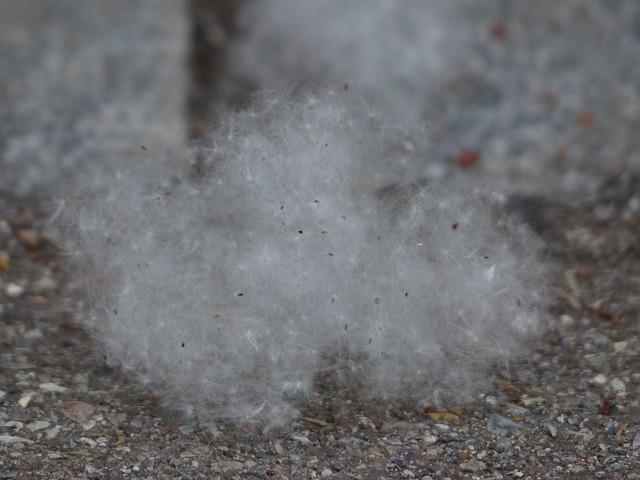
For those of us with allergy issues, Spring pollens are challenging enough! Add to that mix all the flying cotton fluff filling in the air these days and it can be a little overwhelming. But good news! All that floating fluff is Not pollen and it’s not adding to our allergy woes, apart from the visual/psychological effect.
The fluff does appear at the same time many of our local trees are pollinating and that’s how it comes to have a bad reputation. Maple, cedar/juniper, alder, elm, oak, and ash trees can all being pollinating at this time from year to year. And not to be left of this “party mix” grasses, too, can be adding their pollen to the collection. None of this is as visible as the fly-away cottony fluff of the cottonwood varieties.
Here’s the real deal on this. Despite the misconception that trees are pollinating when releasing this stuff, the fluff is actually what happens after pollinating is complete! According to pollen.com “When fruits mature, the capsules split open and release small seeds attached to silky hairs that assure wind dispersal. The cotton-ball appearance of the group of seeds is responsible for the name “cottonwood” attached to some species.” More good news in this scenario is the flying fluff is only around for about 2 weeks.
Actually, though, this cottony fluff has some pretty amazing stats and facts behind it:
~ The windblown cottonwood seeds can stay airborne for days before they land.
~ It can travel as far as 5-20 miles.
~ A single cottonwood tree can release more than 25 million seeds.
So, now you can actually enjoy ~ pollen-fear free ~ the odd scene of the myriads of flying fluff in the air!
Leave a Reply